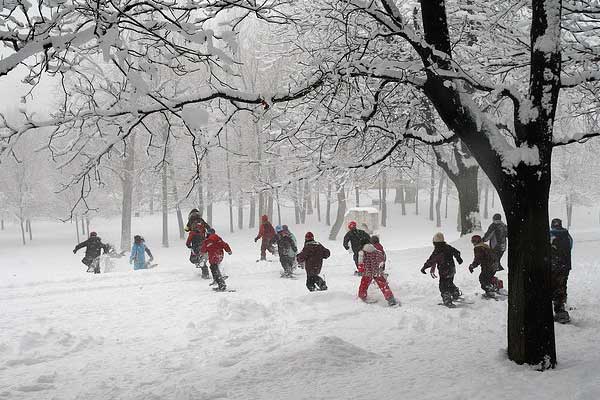
Into the woods: why urban forests and green spaces matter and what you can do to help
Published: December 10, 2014
From New York’s Central Park to São Paulo’s Ibirapuera Park or Toronto’s High Park, green spaces are an integral – even iconic – element of many of the world’s leading cities.
Associate Professor Tenley Conway, with the University of Toronto Mississauga’s geography department, researches how municipalities, NGOs, community groups and landowners influence patterns of forests within a city.
Writer Dominic Ali spoke with Conway about her research and how cities can be better planned to protect these green spaces.
What inspired you to start researching urban vegetation?
My graduate work focused on land use change modelling in urbanizing landscapes to understand the ecological impacts of urban and suburban development. However, I became frustrated that much of the ecological research literature assumes that once an area becomes urbanized it is void of ecological features.
This is clearly not true, but because of this bias in the literature, ecological characteristics of urban landscapes have not been well studied. I decided to focus on urban vegetation, through the framework of examining cities as socio-ecological systems, to better understand conditions after urbanization.
Why are Toronto’s green spaces so important for residents?
Urban green spaces provide a way for us to experience a bit of nature in our everyday lives. In a city like Toronto, access to green space is very important for residents who do not have the means to travel to remote wilderness destinations. A growing literature is examining the fascinating ways that city trees and other vegetation support the health and well-being of urban residents. For example, presence of treed spaces next to high density housing is associated with stronger social networks for residents.
Additionally, urban green spaces provide a number of ecosystem services, like regulating micro-climates and controlling storm water run-off, which contribute to healthy, functioning cities.
How can environmental land-use planning improve urban areas?
There are important environmental justice issues that environmental planners can address. In many urban areas, trees and other vegetation are unevenly distributed across neighbourhoods, which can sometimes lead to inequities in access.
Finding creative solutions to incorporate green features, whether they are street trees, parkettes or green roofs, is an important contribution planners can make. Additionally, green spaces are living infrastructure, which means there needs to be ongoing management to help trees thrive over the long term.
 What’s the biggest challenge facing North American cities such as Toronto when it comes to protecting its green spaces?
What’s the biggest challenge facing North American cities such as Toronto when it comes to protecting its green spaces?
There is a basic tension between creating compact cities and lower density, greener cities. Compact cities can help protect green space outside urban areas, due to more efficient land use within the city, but often at the expense of fewer urban parks and less vegetation. As intensification efforts occur in the GTA, we need to ensure creative strategies to integrate urban vegetation are not ignored at the expense of high-density development.
(Photo of Vancouver's Stanley Park by Stephen Downes via Flickr.)
What are some findings from your research that our readers might not already know?
The majority of the urban forest falls on residential property, making residents the most important actor in successful management of this important resource.
My recent research focusing on urban residents’ management of trees suggests that many tree removals can be avoided if better decisions are made when planting trees. For example, trees should not be planted too close to the house or other structures, and it’s important to select a species that will fit the space available once it reaches a mature size. This speaks to the need for more information about tree planting and care to help residents be good stewards of the urban forests.

